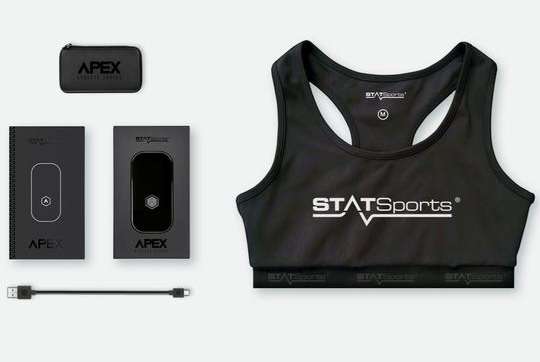Sports Tech: Big Data is Watching!
Article By : David Benjamin

Sports technology — not including video games — occupies the shadows of the CES 2019, but it does convey a consistent theme: Big Brother (Big Data) is watching you play.
At an international conference where audio, video, smartphones, smart homes, smart security, and especially autonomous automobiles compete for the spotlight’s glow, sports technology — not including video games — occupies the shadows of the Consumer Electronics Show (CES), but it does convey a consistent theme: Big Brother is watching you play.
Two panels on cutting-edge sports technology on Tuesday revealed a relative paucity of dazzling new products. But an eclectic array of expert panelists addressed the ability of gadgets — with wearables, cameras, radar, and global positioning technology — to keep athletes, both elite and amateur, under relentless scrutiny.
Panelist Steven Webster, founder and CEO of Asensei, cited the fact that coaches and athletes are receiving real-time data via clothing, wristbands, cameras, and other devices. “The question is,” he said, “how to apply that to athletes.”
Marilou McFarlane, president of STATSports, Inc., offered the most obvious example of this trend, the STATS Apex device, an electronic monitor smaller than a mobile phone. Strapped to an athlete’s back in a special vest, it live-streams information about heart rate, speed, body heat, stress load, and other measurements. It also logs all data for “post-session download.”

GPS performance tracker (Image: STATSports)
In other words, an athlete’s every smooth move and every blunder are rendered eternal in the vast cloud of big data. Citing the growing use of such devices for children’s soccer, McFarlane said, “We can measure the speed, balance, and educational progress” of the young players.
Kids like this welcome added pressure, she said, because “they do want to train like Olympic athletes train.”
Addressing that issue, Webster of Asensei described his pet product, a coaching system that observes an athlete’s every move in training and practices and feeds advice into an earphone. For example, Asensei’s instructions on deadlifting a barbell are delivered by a soothing female voice who says, “Keep your low back flat. Then drive through the feet to stand up … Great start. This time…”
When this program is applied to rowing — Asensei’s current prototype focus — Webster said, “She’s literally watching every stroke.”
Similar data, said F. Grant Kovach, director of visual innovation at Under Armor, can be transmitted and collected from his company’s high-tech HOVR foam “smart” running shoes. But he cautioned that the imperative for compiling data can’t supersede the actual function of the “wearable.” “A shoe,” he said, in a note of common sense, “still has to be a shoe.”
This blip of practicality was not merely a sidelight in the discussion. One panelist, Colette Lucas-Conwell, is actually an Olympic athlete, as coxswain for a U.S. national rowing crew. She said she likes to study data on her team’s performance but depends on a “data coach” to understand it all.
She also noted that the constant body-monitoring now possible poses issues previously unheard of for athletes. “We’re all a little scared when we hear they’ve got this new heart rate monitor,” she said. A bad reading, she said, could get you booted from the team.
In fact, noted Asensei’s Webster, a single reading or set of readings is inadequate for measuring a human athlete. He said that an ideal analysis requires 100 hours of video studying an athlete and a special analyst to review the film so that the instructional program can “see what a coach sees, say what a coach says, and teach what a coach teaches.”
In short, this could cost a lot of money.
The panelists seemed to agree that technology has made intense and constant scrutiny the future for athletes from Little League to the NBA. Said McFarlane of STATSports about the Apex device, now selling for $299.99, “This is going to be a fairly ubiquitous product.” She added that parents of young athletes are “mesmerized by the fact that you can put this technology on your back” and that “teenagers can compare themselves [and their data] to the best players in the world.”
Webster offered a note of caution to all of this techno-enthusiasm, saying, “It’s very important in sports that we don’t give up our agency in coaching to machines.”
target="new">
Even McFarlane concurred on this point. “There’s only so much you can do” with physical data collected by a device.” She said that, at best, the latest gadget “is just one piece of the puzzle that can be objective.”
Technology, as indicated by another CES panel, “New Sponsorship Partnerships Redesigning Fan Engagement,” is changing not just the lives of athletes but those of fans.
The game is watching the fan
Fans might be watching the game, but the game — with a greater sense of lucrative purpose — is watching the fans. As noted by panelist Carola Jain, chief marketing officer for Spartan Race, Inc., the promoters of sporting events depend on real-time feedback from spectators.
“We do a lot of live-streaming. We get a lot of sentiment from our viewers,” she said. The goal is to seek out fan interest in particular athletes.
“The racer is sort of a star,” she said. “People are interested in the people story. We focus on … those profiles and try to bring that star to life.”
Elizabeth O’Brien, IBM’s program director for worldwide sports and entertainment partnership marketing, explained how big data plays a role in recruiting athletes in, for example, tennis. She said that the World Tennis Association (WTA) can’t range the world watching every promising young player.
So, she said, helpful data sponges like IBM absorb video from every tennis tournament in the world and compile clips that spot, identify, and classify — for WTA review — the most promising young prospects in tennis.
If you swing a racquet anywhere on earth, Big Brother — er, Big Data — is watching.
Another example of this phenomenon was cited by Kerry Tatlock, head of marketing partnerships for the National Basketball Association (NBA). Tatlock explained how the NBA encourages its star players to engage fans via social media platforms like Twitter, Facebook, and Instagram.
Needless to say, every fan who connects with an NBA hero connects to the NBA’s marketing machine, providing contact and personal information to a host of sponsors and advertisers affiliated with the league. Hence, the tentacles reaching into the star-struck fan’s life put your average giant octopus to shame.
Tatlock described this sort of outreach as an effort to customize and personalize the once-passive activity of watching a game, “creating your own experience with that game, that player.”
Tatlock also revealed how “personalizing” the fan experience accrues benefits to the NBA and its sponsors. When people tune in to a basketball game, team, or player, the league seeks ways to link that personal loyalty to a particular NBA partner, advertiser, or sponsor. “We ask what the league can deliver to the fans in partnership with a sponsor. How can we uniquely partner?” she said. “The magic happens when you’re able to do something … unique to the sponsor.”
O’Brien of IBM made a similar connection between fan emotion and commercial gain. Citing partnerships with golf and tennis, the Grammy Awards, and ESPN Fantasy Football, O’Brien said, “This is where our audiences are. This is where they’re passionate … What does an organization look like that would be a brand match with us?”
Subscribe to Newsletter
Test Qr code text s ss




